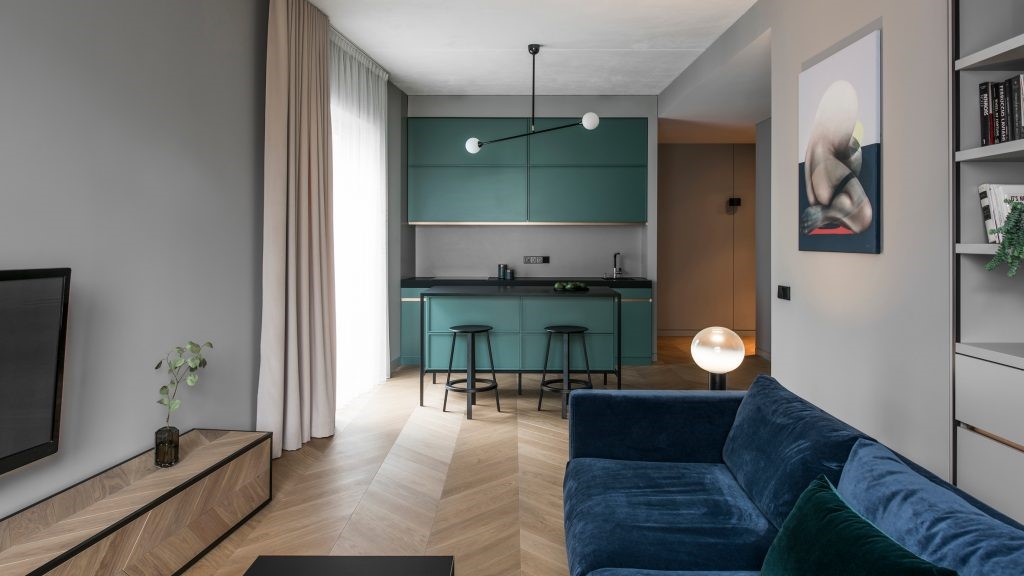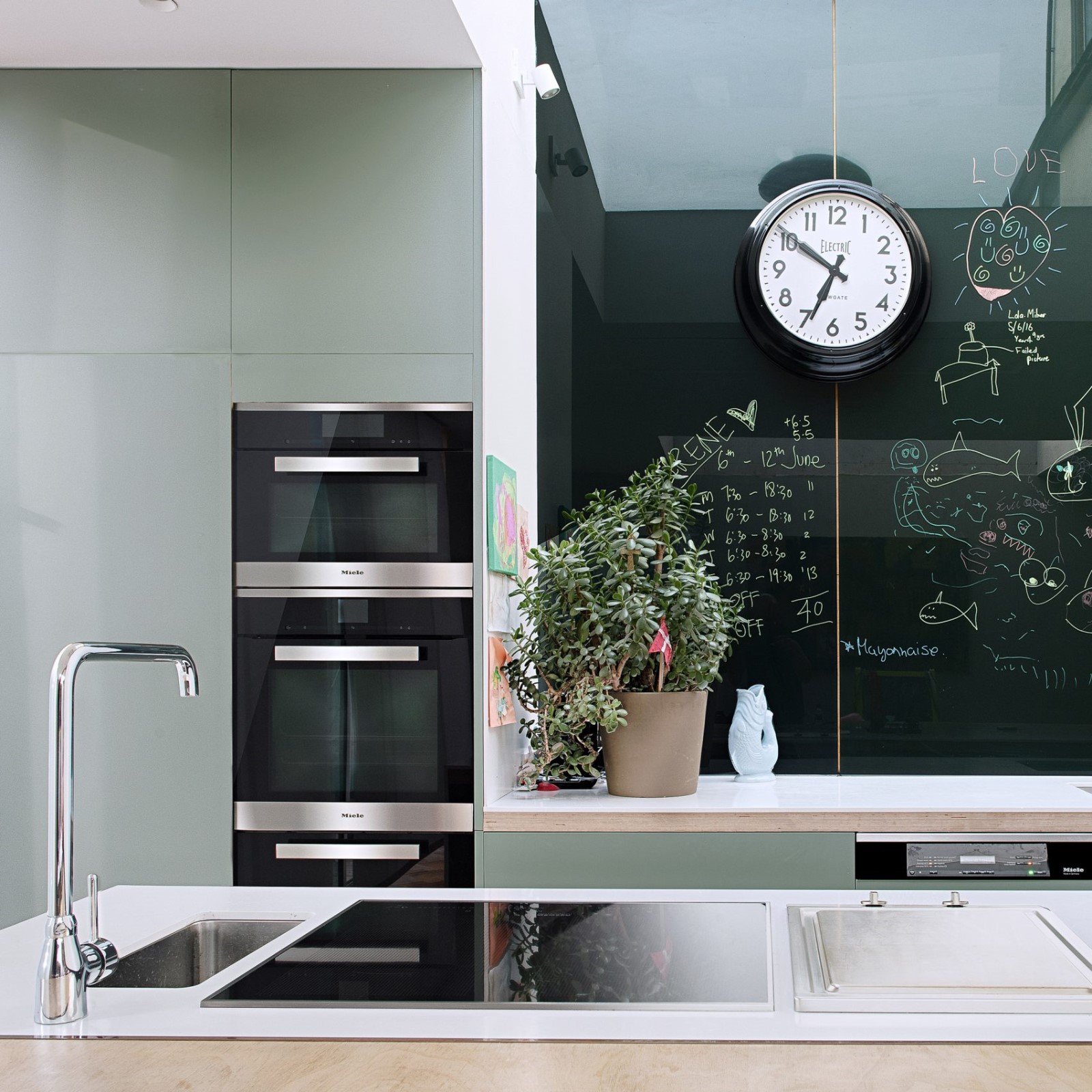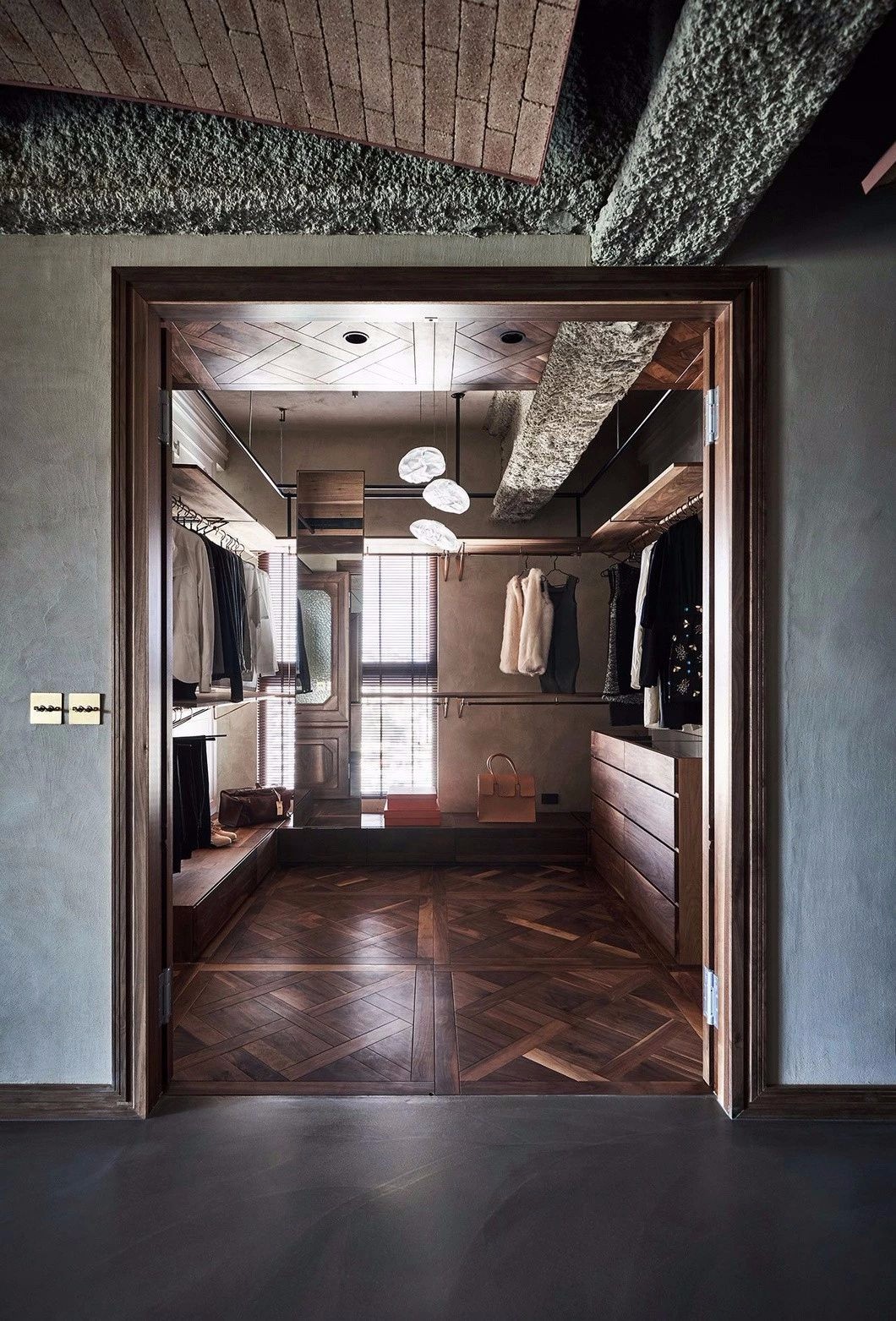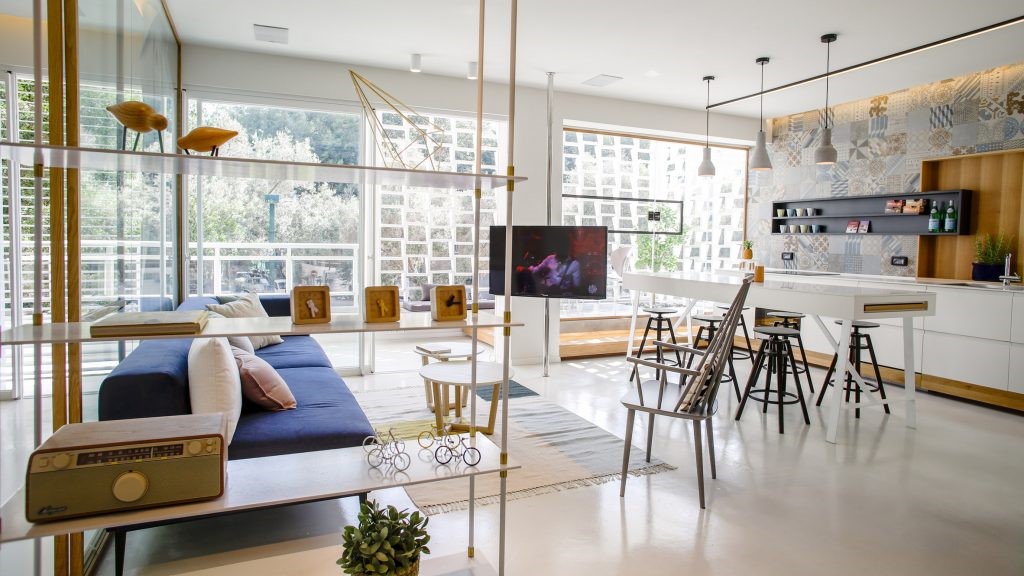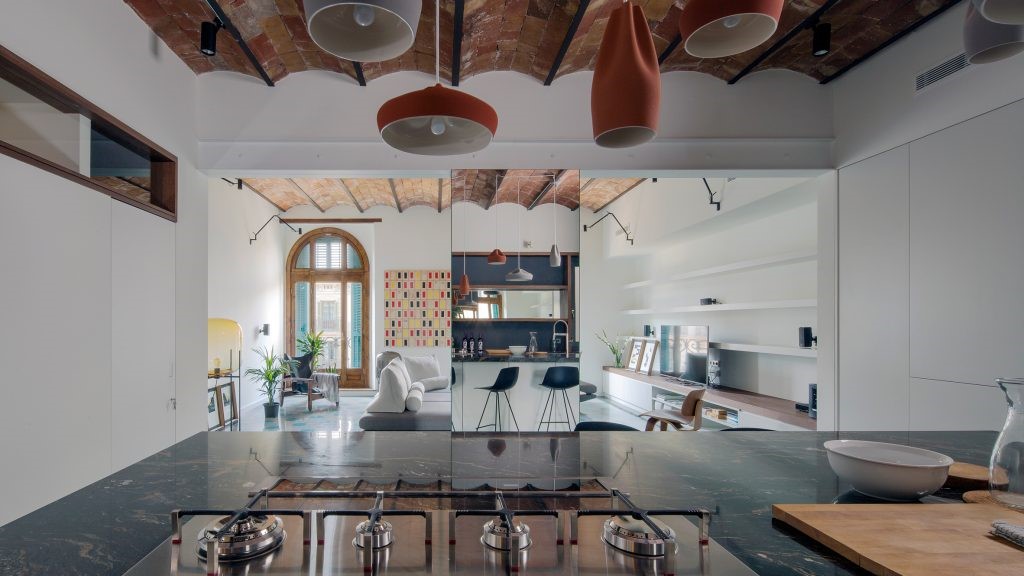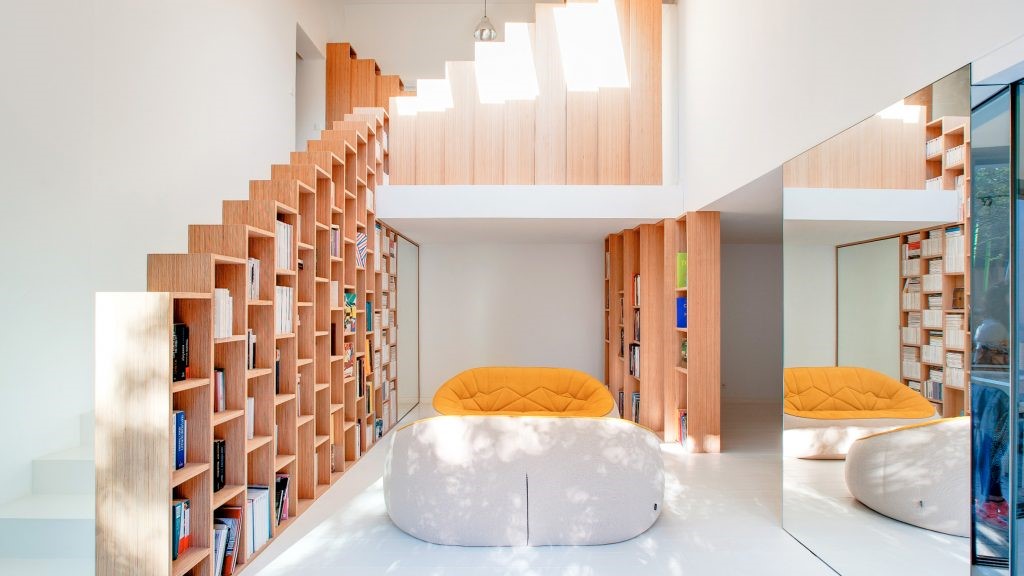The Beehive Luigi Rosselli + Raffaello Rosselli
2018-05-08 19:00
© Prue Ruscoe
(Prue Ruscoe)


重新评估废弃建筑往往依赖昂贵和稀缺的材料来确定其价值。蜂巢探索了一种被低估的废物产品,比如无处不在的陶土屋顶瓷砖,是如何重新定义和重新估价的。对废料作为一种材料的探索源于这样一种知识:建筑创造了澳大利亚高达50%的废物产量;建筑能源足迹主要是基于所含能源的材料。材料再利用既解决了这些环境影响,也是迄今为止最有效的建筑形式。Raffaello Rosselli与Luigi Rosselli建筑师合作设计了他们的新办公楼。通过在自己的工作室进行废物再利用的实验,它的目标是成为未来项目的榜样。
Revaluing Waste Architecture is often reliant on expensive and scarce materials to define its value. The beehive explores how an undervalued waste product, like the ubiquitous terracotta roof tile can be redefined and revalued. This exploration of waste as a material stems from the knowledge that construction creates up to 50 percent of Australia’s waste output; and that a buildings energy footprint is largely based on the materials embodied energy. Material reuse solves both these environmental impacts and is by far the most efficient form of building. Raffaello Rosselli collaborated with Luigi Rosselli architects to design their new office building. Through experimenting with waste material reuse on its own studio it aims to be a role model for future projects.
© Ben Hosking
本·霍斯金


寻找一种废料,该项目从研究物质废物流开始,寻找一个合适的物体作为遮阳板,以过滤主要正面所面对的刺眼的西方太阳。兵马俑瓷砖,一个被忽视的象征郊区,选择它是因为它是容易获得,没有充分的再利用市场。(虽然没有制造出来的瓷砖被收集,但较新的瓷砖没有市场价值,并找到了进入填埋场的方法。)抛开瓷砖的共性,陶瓷砖以其原始的基本物质吸引人,没有完全相同的瓷砖,用粘土铸造,仍然用手工烧制。从上下文来看,兵马俑还与附近砖石建筑的生砖物质性有关。
Search for a waste material The project started with the study of material waste streams looking for an appropriate object for a brise-soleil to filter the harsh western sun that the main façade faces. The terracotta tile, an overlooked symbol of suburbia, was chosen as it is easily sourced and without an adequate reuse market. (While out of manufacture tiles are collected, newer tiles have no market value and find their way to landfill.) Putting aside the tiles commonality, the terracotta tile appealed in its raw elemental materiality, with no tile exactly alike, cast in clay and fired still by hand. Contextually, the terracotta also related to the raw brick materiality of the neighbouring masonry buildings.
© Ben Hosking
本·霍斯金


通过制作-1:1原型进行设计,设计过程也是这座建筑的独特之处。作为对一个几何上复杂的物体的回应,外观设计主要是通过多次的全面测试和手工制作的原型来构思的。这开辟了一种直观的设计形式,通过制作。该过程的触觉性允许快速成型,包括试验多种瓷砖课程类型。
Designing through making - 1:1 prototypes The process of design was also unique for this building. In response to an object which was geometrically complex, the façade design was largely conceived through multiple full scale tests and hand built prototypes. This opened up an intuitive form of designing through making. The tactility of the process allowed rapid prototyping, including experimenting with multiple tile course types.
© Callum Coombe
愈伤组织


Facade Setout
立面布置


这些原型为最终设计提供了信息,每个瓷砖课程都是根据其功能设置的。由于它的强度,在底部使用了锐利的航向,同时也是为了掩盖那些坚实的假肢。在眼升处使用等边瓷砖,以减少视力障碍。对角线瓷砖在顶部使用,因为它们的间隙很低,并且是向北倾斜的。瓷砖的变化也使我们能够将板边隐藏起来,从而将结构荷载降低到单层,这一设计过程使我们能够利用该模块来进一步解决设计中具有挑战性的元素,并对其进行物理解决。比如弯曲的瓷砖外墙,通过将周围的建筑物连接起来,并从工地前的纸皮树上退一步,这对在建筑环境中赋予外墙的比例至关重要。
These prototypes informed the final design, where each tile course was placed based on its function. The acute course was used at the bottom due to its strength, as well to obscure the solid spandrels. Equilateral tiles were used at eyelevel to reduce visual obstructions. While diagonal tiles were used at the top due to their low clearance and were angled north. The variation of tiles also allowed us to hide the slab edges that reduced the structural load to single stories discreetly. This design process allowed us to make of the use of the module to further tackle challenging elements of the design and resolve them physically. Such as the curved tile façade, which was crucial to give the façade proportion within its built context by linking its misaligned neighbouring buildings and stepping back from the paperbark tree in front of the site.
© Raffaello Rosselli
c.Raffaello Rosselli


对现场的回应。该项目的主要姿态是考虑到项目的直接背景。这座建筑的形状是对周围的挫折和高度的反应。以及弯曲的纸树皮街道树(Melaleuca),侵犯了网站。太阳镜的正面过滤了刺眼的太阳,同时通过8米宽的小正面最大限度地增加了光线。外墙保留了南面两层仓库的感觉,顶层朝后倾斜。弯曲的遮阳篷在一楼上方升起,以配合其背景,并提供了一个慷慨的界面与街道。
Responding to the site. The projects primary gestures came through a consideration of its immediate context. The building’s form responds to the neighbouring setbacks and heights. As well as curving around the paperbark street tree (Melaleuca) which encroaches the site. The brise-soleil façade filters the harsh sun while at the same time maximising light through the small 8m wide frontage. The façade retains the feeling of the two storey warehouse to the south, with the top level set back. The curved awning raises above the first floor to match its context and provides a generous interface with the street.
© Prue Ruscoe
(Prue Ruscoe)


在建筑内部,除了其他商业空间外,还有一个光线过滤的建筑工作室,旨在激发创造力和团队精神:一个由建筑师组成的“蜂巢”(Beehive)。这一设计挑战了开放式办公大楼的共性和往往令人疏远的性质,它试图提供一个活跃但又亲密的环境,由定制的细木工提供多个工作岗位,这在很大程度上是由原工作室重新设计的,后者是这一项目的另一个项目升级项目的另一个组成部分。主空间没有任何墙壁,而是由两排线性的半封闭隔间定义的,每个建筑师都有两张桌子,由一个长长的直线工作台连接起来,以便于协作工作。
Internally the building houses, amongst other commercial spaces, a light-filtered architecture studio designed as an environment to stimulate creativity and teamwork: a ‘Beehive’ of architects. Challenging the generic and often alienating nature of open plan office buildings, the design sought to provide an active but intimate environment with multiple working positions offered by custom-built joinery, which was largely repurposed from the former studio, another component of the upcycling drive on this project. The main space does not have any walls, rather is defined by two linear rows of semi-enclosed booths with each architect provided with two desks, linked by a long linear standing bench which facilitates collaborative work.
© Prue Ruscoe
(Prue Ruscoe)


在顶层,公共花园露台提供一个放松点,在阳光下工作,举行社区活动或在漫长的一天后放松。在这个级别之下,会议桌是半封闭的一个陶瓷砖书架,另一个变化的堆叠兵马俑模块,带入内部。这是一次有意识的尝试,目的是重新审视重用材料的价值,倡导更可持续的解决方案,并向客户和广大公众表明,建筑过程中的废物产品是可以再利用的,其内在美从外观设计到书籍展示都是如此。
On the top floor, a communal garden terrace offers a point of release to work in the sunshine, hold community events or relax after a long day. Below this level, the conference table is semi-enclosed by a terracotta tile bookshelf, another variation of a stacked terracotta module, brought into the interiors. This was a conscious attempt to re-contextualise the value of reusing materials, advocating for more sustainable solutions and showing clients and the wider public that it is possible to reuse the waste products of the construction process, with all their intrinsic beauty from façade design to the displaying of books.
© Prue Ruscoe
(Prue Ruscoe)




















































































Architects Luigi Rosselli, Raffaello Rosselli
Location Surry Hills, NSW, Australia
Project Team Raffaello Rosselli, Luigi Rosselli, Jeffrey Blewett, Lluis Molins Calvet
Project Year 2017
Photographs Ben Hosking, Prue Ruscoe, Callum Coombe, Raffaello Rosselli
Category Offices
Manufacturers Loading...


















